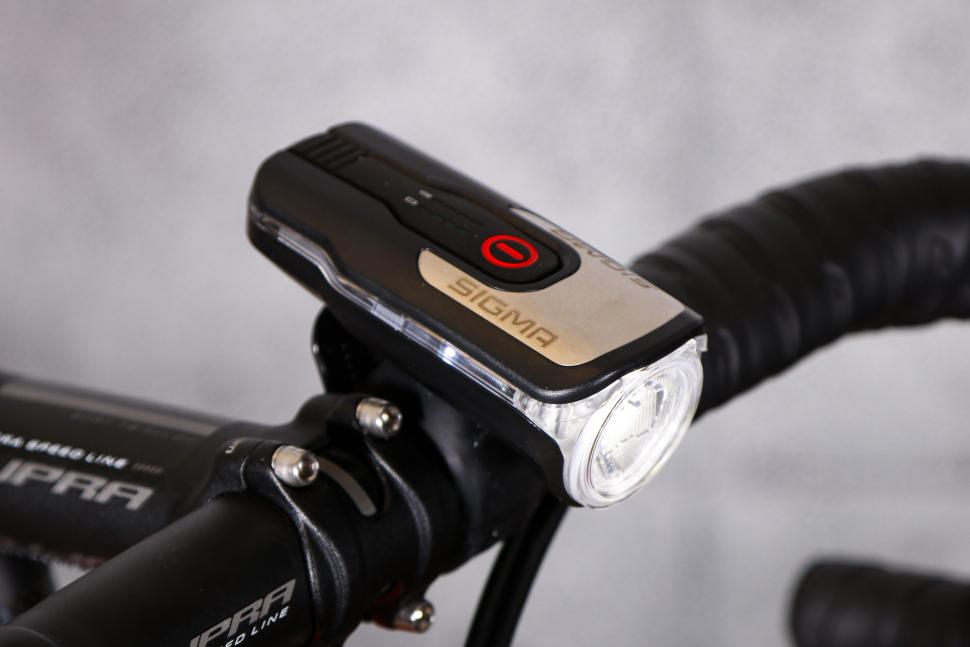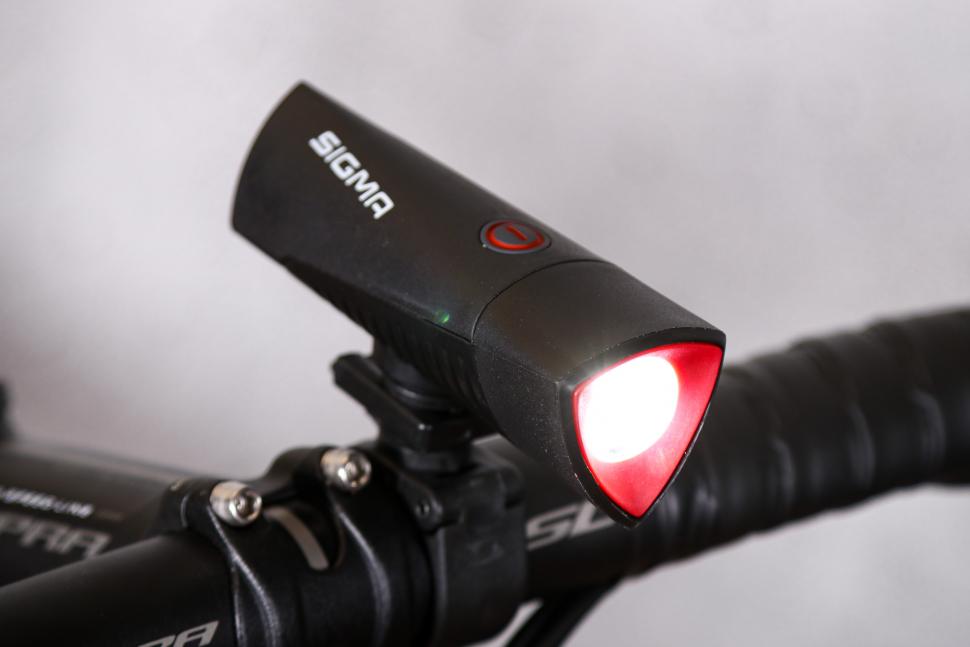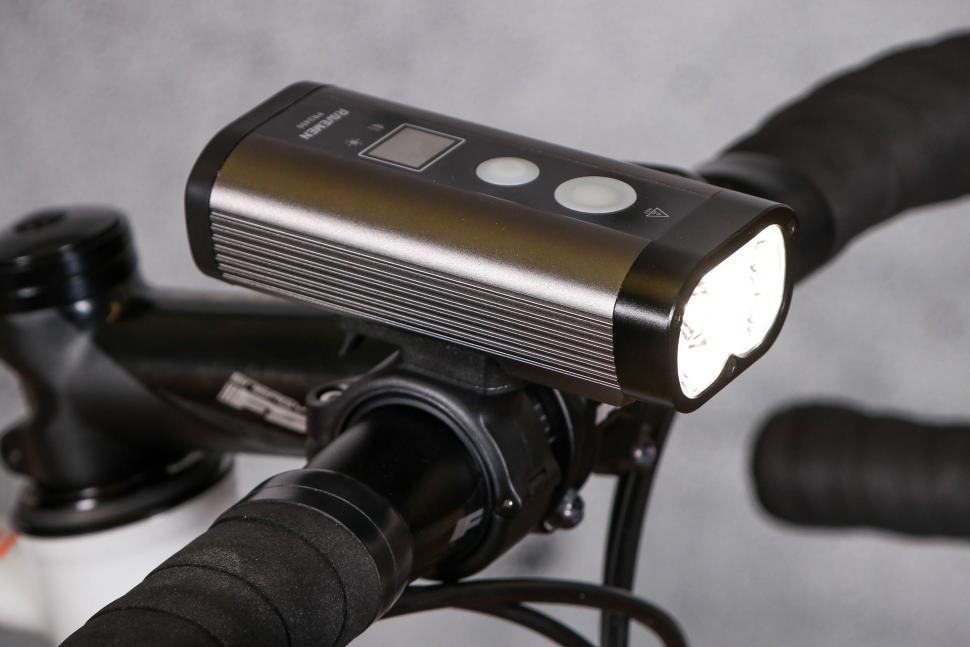- News
- Reviews
- Bikes
- Components
- Bar tape & grips
- Bottom brackets
- Brake & gear cables
- Brake & STI levers
- Brake pads & spares
- Brakes
- Cassettes & freewheels
- Chains
- Chainsets & chainrings
- Derailleurs - front
- Derailleurs - rear
- Forks
- Gear levers & shifters
- Groupsets
- Handlebars & extensions
- Headsets
- Hubs
- Inner tubes
- Pedals
- Quick releases & skewers
- Saddles
- Seatposts
- Stems
- Wheels
- Tyres
- Tubeless valves
- Accessories
- Accessories - misc
- Computer mounts
- Bags
- Bar ends
- Bike bags & cases
- Bottle cages
- Bottles
- Cameras
- Car racks
- Child seats
- Computers
- Glasses
- GPS units
- Helmets
- Lights - front
- Lights - rear
- Lights - sets
- Locks
- Mirrors
- Mudguards
- Racks
- Pumps & CO2 inflators
- Puncture kits
- Reflectives
- Smart watches
- Stands and racks
- Trailers
- Clothing
- Health, fitness and nutrition
- Tools and workshop
- Miscellaneous
- Buyers Guides
- Features
- Forum
- Recommends
- Podcast
feature
Are bike lights too bright nowadays? Different beams and power settings tested
Some riders use bike lights throughout the year, but as we move into winter, you’re going to need them if you’re intent on continuing to ride outside after work. How bright do you need to go? It can be tempting to go for the biggest lumen count that you can afford, but doing so might result in you dazzling road users that are coming the other way, endangering everyone.
> 2021/22 road.cc Front Light Beam Comparison Engine
Dave and Liam set out to do some very unscientific science to give a representation of different front lights from a cyclist’s point of view and a driver’s too, finding out that the brightness of the light isn’t necessarily the defining factor in how well a front light helps you to see the road ahead, or how blinding it can be for other road users. There are lots of other factors to consider: how well it’s made, what the mount is like, how long the battery lasts etc.
> Looking for a front light? We've got a great buyer's guide right here
Another thing we looked at was beam shape, and how that affects things. So as well as a range of brightness, we used lights that use different sorts of lenses. Anyway, let’s have a look at the lights we used in the video.
First up, the Cateye AMPP 200. This is one of two lights that are at the bottom end of the power range for this video, putting out 200 lumens. It’s a pretty standard torch-style light, and it’s nice and light at just 62g. It’s easy to fit too, with a simple silicone band. The light uses Cateye’s OptiCube lens which is a pretty standard round beam.
Moving on, we have the Sigma Aura 80. The 80 stands for 80 lux, which is another way of measuring output. This is what you’ll often hear called a ‘German beam’ light because it complies with the German regulations for bike lights. What that means is it’s a cutoff beam where 95% of the light has to land on the road and not in another road user’s eyes. Lux and Lumens aren’t directly comparable, but these two lights have a similar output.
Turning it up a notch, the Moon Rigel Lite with 500 lumens of power is a mid-range light, and there’s a refractive bit on the top of the lens here that’s designed to point a bit more of the light down towards the road.
Again, it’s usefully small and light, and Moon uses a Garmin-style quarter-turn mount which makes it easy to mount. You can even use your out-front mount if you want.
The Ravemen CR450 has a similar output at 450 lumens. The main difference between this and the Moon is that the Ravemen uses a much more complicated refractive lens to make the beam shape wider and flatter. The idea is that it isn’t as dazzling to oncoming traffic and more light goes on the road. It’s not as stark as the cut-off on the Sigma though.
Up a lighting notch to the Sigma Buster 700, with - you’ve guessed it - 700 lumens of power. That’s fairly bright for a single-LED torch-style light such as this, and this kind of power is where you’d start if some of your riding was on gravel or trails.
Lezyne’s 1600XXL has not one but three LEDs up front and is about twice as powerful as the Sigma Buster. This is a light that’s designed to be fully capable of keeping you upright off-road, at speed. It also has a useful race mode where it’s just full power and low power on the button, a bit like a full and dipped beam on a car.
And lastly, Ravemen’s PR2400. Almost half as powerful again, and if the numbers are to believed, twelve times more powerful than the little Cateye. We were expecting this one to be pretty antisocial on full beam if we’re honest, although like the smaller Ravemen light it has a dipped beam too.
Which one did Liam and Dave pick as their favourite? Watch the video to find out. And do you think some bicycle lights are too bright? Give us your dazzling stories in the comments below.
Latest Comments
- Steve K 4 sec ago
Even if this gets to 100,000 signatures, I suspect the Petitions Committee will simply say there has already been a debate, so no need for another...
- Born_peddling 7 hours 56 min ago
Muddyfox tour 100's I've wide & flat feet plus there's the optional choice of using cleats with them...
- Prosper0 7 hours 51 min ago
Just doing the Lord's work in case anyone's interested in this product. This Mucoff Pump is a £100 rebrand of an £85 Rockbros rebrand of a £60...
- mdavidford 8 hours 39 min ago
Obviously it means 'springing out of the bunch' on a critical sector. Or maybe it's referring to the time of year.
- David9694 9 hours 26 min ago
Car crashes through garden wall for second time in 18 months https://www.wiltshire999s.co.uk/car-crashes-garden-second-time/
- David9694 9 hours 28 min ago
Woman taken to hospital after flipping car onto roof in Trowbridge...
- A V Lowe 10 hours 10 min ago
Its blindingly obvious from the image that the DKE of the buses include the mirrors which extend to nearly reach the edge of the tarmac pavement on...
- Sredlums 10 hours 43 min ago
It's sad when being very good at your job - any job - isn't enough to earn a decent living. It shouldn't be that way....







Add new comment
42 comments
Great video, and really pleased to see road.cc giving this some serious attention. Since you asked "what else" - how about showing the Ravemen lights (and any others claiming a dipped pattern as distinct from simply lowered lumens) at their brightest "dipped" setting as well as the full-on brightest we saw?
Powerful front lights need to have a road beam pattern. This is a legal requirement in European countries.
A lot of dynamo lights do this such as Supernova and some battery powered lights.
Circular beams just dazzle other users and also waste a lot of energy illuminating empty space.
Above a certain amount of light (around 30 lux I'd say), not having a layered beam putting the light on the road and not elsewhere becomes counterproductive. It's annoying and dangerous, to other cyclists as well.
And its StVZO (Straßenverkehrs-Zulassungs-Ordnung), please.
I agree we need more lights with a good beam pattern. Most lights have a round or round-ish beam, and it's impossible to get enough light where you actually want it without also dazzling oncoming road users. More lights with the option to switch between "dipped" and "full beam" patterns on-the-go would be even better.
As a pedantic point, "Lux" isn't a measure of light output - it is a measure of light intensity (1 lux = 1 lumen/m2) and hence is meaningless without further information - i.e. the distance and area over which the lux is measured.
I would think lux is precisely the measure that is required - how brightly is the road surface illuminated? Yes, it would need to go together with an indication of the extent and shape of the pool of light achieving that brightness, but given that the spread of light is correct then I want to know how brightly it illuminates the surface. The lumens alone tell me little, since I don't know how many hit the road and how many are lost to the sky, so even if I wanted to do the maths I couldn't.
Off roaders who want to see low flying branches etc, I get that lumens might be useful for them, but this is road.cc
You are right - used correctly a lux measurement can be far more informative than a lumens measurement. Indeed, I assume that the StVZO-compliant lights tend to quote lux measurements because the regulations specify various lux requirements (at 10m from the light) and I would further assume that therefore the lux measurement quoted corresponds to the (peak?) measurement taken to meet the regulatory requirements. (if you're interested, a bit of googling finds this page which I think outlines the requirements: http://www.enhydralutris.de/Fahrrad/Beleuchtung/node403.html - although my knowledge of german and german law is nowhere near good enough to confirm that that web page is accurate or up-to-date)
But in order to be useful, you do need to know what distance and what area is being considered, and ideally this would need to be standardised across lights for comparison. If there's no information provided, then a lux measurement is meaningless. The same light could be measured as having 10,000 lux or 0.001 lux depending on how you measure it!
Whilst a lumen measurement has limitations for the reasons you point out, one advantage is that it measures the total output of a light and therefore makes a basic comparison of brightness very straightforward.
I would have thought a lux would be a more appropriate measurement here.
Love my B+M Ixon - ugly as sin but loads of light on the road and battery lasts ages - I have even managed to get the mount to work
The Ravmen lights with 'proper' beam patterns for road use are great. Plenty of light where you need it but less likely to dazzle other road/trail users. My regular commute takes in a few dark woodland mixed use paths, one of which is the main access for some MTB trails. When the MTB boys ride along the main path having 'forgotten' to turn down their lights it is truly blinding for everyone else. Nothing against really bright lights, I just wish more people would have consideration for others and choose the appropriate output at the appropriate time, or at least use their hand to try and shield the light when approaching other path users. There are some really cheap retina burning mega output lights available these days.
Ravemen lights really are the best of the bunch.
I find it odd that only Ravemen are using the fresnel lens setup. AFAIK there's no complex reflectors in Ravemen lights (as are required for the StVZO compliance), it's just a neatly shaped plastic lens. I can't see why every light manufacturer isn't using them instead of just a flat piece of plastic! (Or why there are no after-market versions to stick onto existing lights)
There are! These make a big difference to the bog standard 'torch' style lights, for less than three quid:
https://www.candb-seen.co.uk/product-39mm-diffused-lens.html
Pages